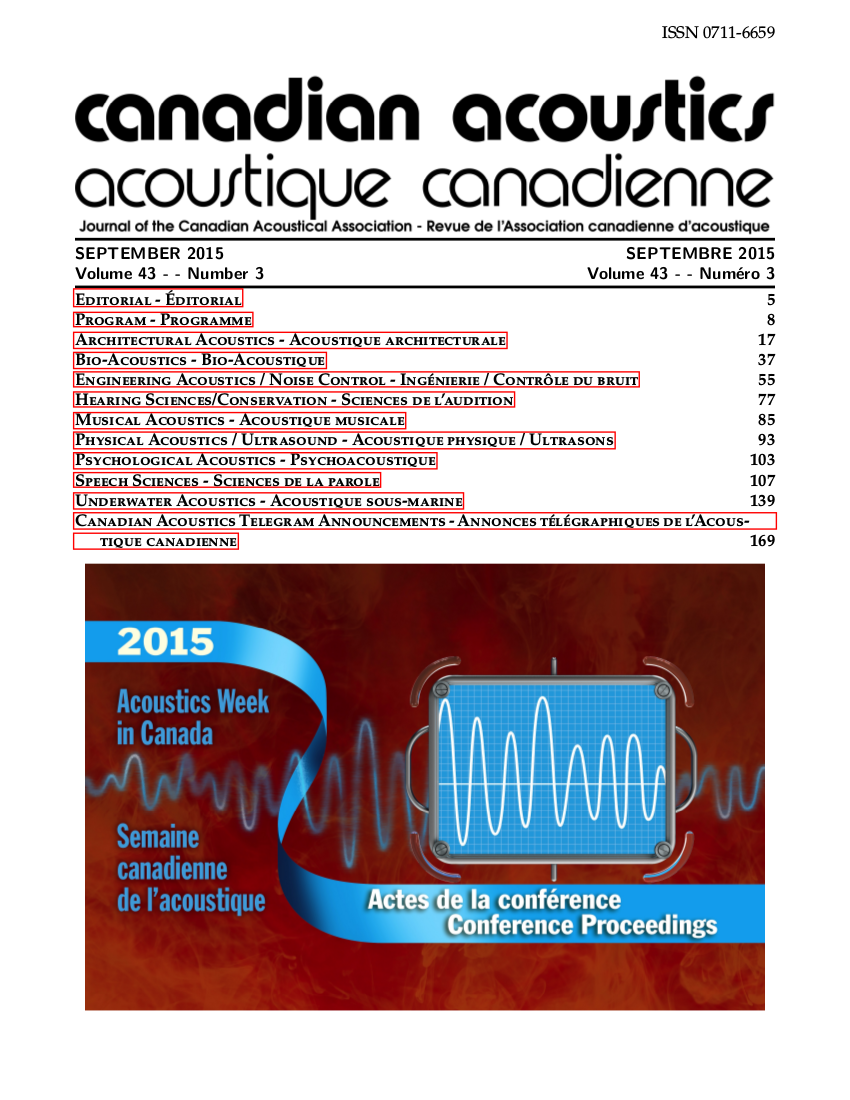Rhythm metrics of spontaneous speech and accent
Abstract
The present study reports preliminary results of an experimental evaluation of the stability of rhythm metric scores across different speech genres (i.e., read sentences vs. spontaneous speech) in English and Japanese. Data for native English (L1 English) speakers and from one L2 English speaker (L1 Japanese) was extracted from the Wildcat Corpus (Van Engen et al., 2010). L2 English and L1 Japanese data was extracted from unpublished data generated in an active project investigating spontaneous speech across dialects and accents (Warner et al., 2015). Three metrics (i.e., %V, VarcoV, and nPVI_V) were employed to quantify durational characteristics of the total 48 spontaneous utterances (L1 English: 3 speakers x 3 utterances, L1 Japanese: 3 speakers x 3 utterances, L2 English: 6 speakers x 5 utterances). The rhythm metric scores from the spontaneous corpora were compared to the results in Grenon and White (2008) who examined English and Japanese speech rhythm with 90 read sentences. We predict that measures of rhythm will differentiate between read and spontaneous speech, with spontaneous speech falling on the faster side of each metric. While Grennon and White (2008) had difficulty distinguishing between L1 Japanese and L2 English speech, we predict that using more natural speech will allow for better discrimination of these two speech groups. As predicted, the spontaneous speech had a slightly lower %V scores and a slightly higher VarcoV scores as compared to the read speech of Grenon and White (2008). However, we found that the speech rate of the spontaneous speech was slower than the read speech. The results suggest that metric scores pattern in a similar way across of speech genres, but that the spontaneous speech better distinguishes the L1 Japanese from the L2 English.Additional Files
Published
How to Cite
Issue
Section
License
Author Licensing Addendum
This Licensing Addendum ("Addendum") is entered into between the undersigned Author(s) and Canadian Acoustics journal published by the Canadian Acoustical Association (hereinafter referred to as the "Publisher"). The Author(s) and the Publisher agree as follows:
-
Retained Rights: The Author(s) retain(s) the following rights:
- The right to reproduce, distribute, and publicly display the Work on the Author's personal website or the website of the Author's institution.
- The right to use the Work in the Author's teaching activities and presentations.
- The right to include the Work in a compilation for the Author's personal use, not for sale.
-
Grant of License: The Author(s) grant(s) to the Publisher a worldwide exclusive license to publish, reproduce, distribute, and display the Work in Canadian Acoustics and any other formats and media deemed appropriate by the Publisher.
-
Attribution: The Publisher agrees to include proper attribution to the Author(s) in all publications and reproductions of the Work.
-
No Conflict: This Addendum is intended to be in harmony with, and not in conflict with, the terms and conditions of the original agreement entered into between the Author(s) and the Publisher.
-
Copyright Clause: Copyright on articles is held by the Author(s). The corresponding Author has the right to grant on behalf of all Authors and does grant on behalf of all Authors, a worldwide exclusive license to the Publisher and its licensees in perpetuity, in all forms, formats, and media (whether known now or created in the future), including but not limited to the rights to publish, reproduce, distribute, display, store, translate, create adaptations, reprints, include within collections, and create summaries, extracts, and/or abstracts of the Contribution.


